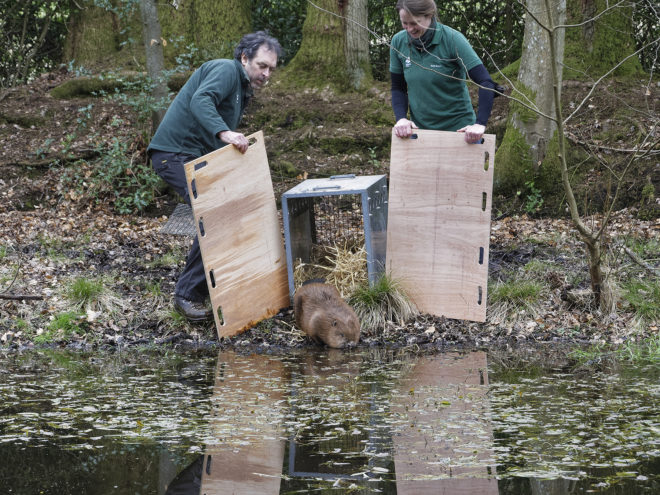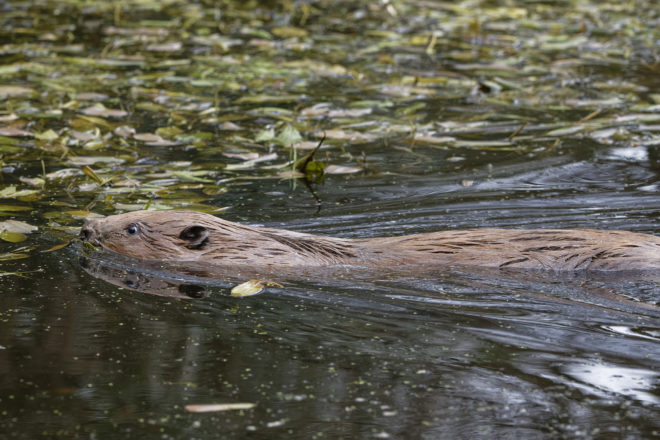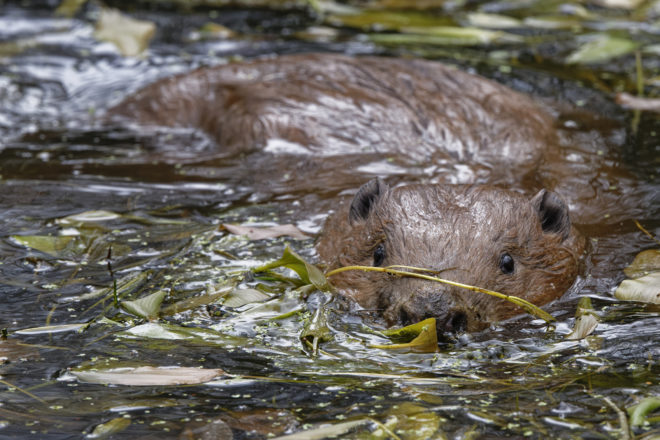Beavers are re-introduced to the South Downs National Park
March 25, 2021
The National Trust has released two beavers in the South Downs National Park and it’s hoped the male and female will become a breeding pair.
The species, known as “nature’s water engineers” as their dams help to create wildlife-rich wetlands, has been released under licence into a 15-hectare area.
Having once been an important part of the ecosystem, beavers became extinct in Britain in the 16th century because of hunting for their fur, meat and scent glands.

This is the first release by the National Trust in south east England, following the successful pilot at Holnicote on Exmoor early last year where the beavers have thrived.
The release is part of the charity’s ambitions to create priority habitats for nature and to increase the diversity of species and wildlife on the land in its care. It is also another step forward in the National Park Authority’s nature recovery drive, which is outlined in detail in our Partnership Management Plan.
David Elliott, National Trust Lead Ranger for the South Downs West, said: “Today we are reintroducing a species which has been absent from this landscape for the last 400 years. Beavers are nature’s water engineers, they can help bring back the natural processes that have been missing from our environment.
“By creating their dams, the beavers will create new and wildlife-rich wetlands; ponds, rivulets and boggy areas that will, over the next few years, benefit a range of wildlife including amphibians such as frogs and toads, many dragonflies and damselflies and wildflowers such as Devil’s-bit scabious that love damp meadows.
“They’ll help us create a pyramid of life based on wetlands – including bird and bat species as their prey increases in abundance.”
Jeremy Burgess, Biodiversity Lead for water habitats in the South Downs National Park, said: “I’m delighted to see this keystone species back in the South Downs and look forward to seeing the changes over the next few years as they restore natural river systems, benefit wider ecology and help to reduce flood risk.
“Hopefully these will be the first of many to return to our countryside.”

The beavers were re-located from wild populations in Scotland, under licence from NatureScot, by consultant ecologist Dr Roisin Campbell-Palmer. Health screening and pre-release care has been provided by Five Sisters Zoo in West Lothian.
A growing number of sites in the British Isles have reintroduced beavers. The National Trust’s South Downs programme will be carefully monitored for its benefits: from water quality and floodwater management to ecology and vegetation changes, by research partners at Imperial College London, the University of Birmingham and the University of Exeter.
The project has been funded in part by the Black Down and Hindhead Supporters of the National Trust, who fundraised some £62,000, thanks to the generosity of local supporters, and a grant of £68,866 from Viridor Credits Environmental Company.
Bob Daniels, chair of the Black Down and Hindhead supporters, said: “The project is a great example of the things we can do locally to positively influence species decline, in a world where the opposite is an alarmingly prominent feature of global headlines. Thanks to local donors, large and small, and several years of hard work the beavers have arrived on site. Now it’s up to the beavers to continue that hard work as ecosystem engineers in residence.”
The valley where the beavers have been released was gifted to the National Trust in the 1990s through public subscription, when local residents fundraised to buy it for the nation. It is close to the 19th century home of Sir Robert Hunter, one of the three original founders of the National Trust. Often considered the mastermind behind the charity’s cause, Hunter did not seek the limelight but provided the legal expertise, which turned the idea of the conservation charity into a reality.
The beavers will continue the work started by the Trust in July 2018 by the countryside team by helping to turn the valley into a haven for wildlife. To date interventions have included changing the pattern of grazing – to a lower intensity over a wider area – with a small herd of Long Horn cattle.
The results are already starting to show, with a complex mosaic of habitats developing in the grasslands. Walking there last summer, lead ranger David Elliott recalls; “The landscape has already become absolutely alive with butterflies – marbled whites, common blues and meadow browns – in numbers you rarely see. Scrub is starting to appear on the margins of the fields, with oaks growing amongst them, often from acorns which have been planted by the jays as food stores for the winter.”

Jane Cecil, National Trust general manager for the South Downs, said: “We’re delighted that such a ground-breaking moment has been reached after a lot of hard work and preparation. We’re really grateful to the Black Down and Hindhead Supporters of the National Trust. Their generosity – and that of our local community – raised some £62,000 so that the project could go ahead. We feel very fortunate to have this remarkable support, alongside a grant from Viridor Credits Environmental Company. As a conservation charity it’s vital that we can demonstrate how we both protect and enhance the environment. These precious places in the South Downs have been entrusted to us, to share them with people and to do the very best for nature and wildlife.”
The Trust is not disclosing the exact location to give them very best chance of establishing themselves in their new home.
For further information see www.nationaltrust.org.uk/southdowns
Images courtesy of National Trust/Nick Upton
